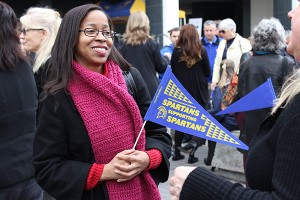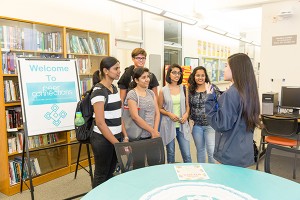Welcome to Spring Semester, 2017! As Winter Break comes to a close, we assume you are busy planning your courses and getting ready to greet your students. We appreciate the positive feedback many of you provided on the “Faculty Matter” Teaching Tips series, and so we will do our best to keep them coming! Our goal is to provide proven concrete suggestions of relatively easy-to-implement activities that will help you engage your students and support their success. Feel free to adopt these as is, or to modify them to better suit your needs or context. These tips will be archived on the Provost’s Academic Spotlight blog under the category “Faculty Matter”. We invite you to use the comment tool on the blog posts to share your own suggestions and tips.
You may recognize this first set from last semester, with a few tweaks.
Faculty Matter Tip #13 – Reach out to your students BEFORE the first day of class.
- Send your students a brief email introducing yourself, conveying your enthusiasm about the course and about meeting them. You can send your message through your class roster on MySJSU or through Canvas.
- Consider giving them a very simple assignment – a question to think about, an artifact to bring to class, something related to the course content that will “prime the pump” for whatever topic(s) you want to discuss at the first class meeting. Remember to follow up on what you asked them to do: have them share their answers/what they brought. If the class is large, students can share in small groups, with a few volunteers reporting out to the entire class.
Faculty Matter Tips #14 – Read through the syllabus you have prepared.
Make sure that if you were a student in your class, you could answer the following questions in the affirmative. After reading this syllabus,
- Would you be able to put together a clear picture of what the class was about?
- Would you have a sense of what your instructor expected you to learn?
- Would it be clear to you what, specifically, you were going to be asked to do or produce, and when?
- Would you be able to figure out how your grade would be determined?
- Would you be able to figure out where you could turn if you encountered any difficulties along the way?
Faculty Matter Teaching Tip #15 – Make Good Use of the First Day of Class.
You will likely need to devote time to various administrative tasks on the first day. You may also want to dive right in and begin covering course content. But don’t miss this important opportunity to begin to create community and to engage students.
- Greet students as they walk in. Arrive at your classroom early, stand at the door, and welcome students as they enter.
- Have students interview each other, in pairs or small groups of 3-4. Sample questions: Name, major, where they are from, something that would surprise you about them, something they are looking forward to this year, something they are apprehensive about.
- Devote a few minutes to “ice-breaker” activities. While some of the students may already know several of their classmates, others may feel quite alone and intimidated as they look around and see so many people who appear to already have friends in the class. If your ice-breaker activities help uncover student experiences or expertise that are relevant to the course, all the better.
- Create a list of class rules and expectations. Start by listing your “must haves” – expectations about cell phones and computers in class, tardiness, civility, how you want to be addressed, how students should approach you if they have concerns, etc.. Invite students to talk in pairs or small groups, and suggest other items for the list. You may be surprised by how many students have strong feelings about the importance of maintaining a respectful learning environment! Devote a few minutes to a whole group conversation. This way, if problems arise later, you can refer students to the rules everyone agreed upon.
- Help students plan how they will study for your class. Have them examine the assignments and due-dates. Help them anticipate how much time you expect them to need to devote to the class. More on this soon…we will devote an up-coming Teaching Tip to helping students to be more intentional and self-aware about their studies.
- Identify students’ starting points. Have students complete a no-points quiz, where they indicate their level of familiarity with a dozen or so foundational concepts for the class (such as “I’ve never heard of it”, “It sounds familiar, but I don’t quite remember what it is”, “I sort of know”, “I know it well and could explain it to someone else”). This will allow you to get a sense of where students have a firm grasp of material and where they will need refreshers. To get a better sense of the range of their interests, consider adding two additional questions: What is one of the most interesting things you remember from a prior course you took in your major? What is one of the most interesting things you remember from a prior course you took outside of your major?
- Have students fill out a personal profile. In addition to basic information (name, preferred way to be addressed, best way to contact, major/minor), you may want to ask them about other commitments this semester (academic load, work, family responsibilities, community responsibilities, etc..), learning styles or needs, and anything else they would like to share with you, to help you help them be successful. You may want to have students email this to you, so that they can attach a photograph of themselves.
- Share something about yourself. Convey your enthusiasm for teaching and for the subject matter. Consider telling students a bit about your professional background. Don’t feel compelled to share details about your personal life.

